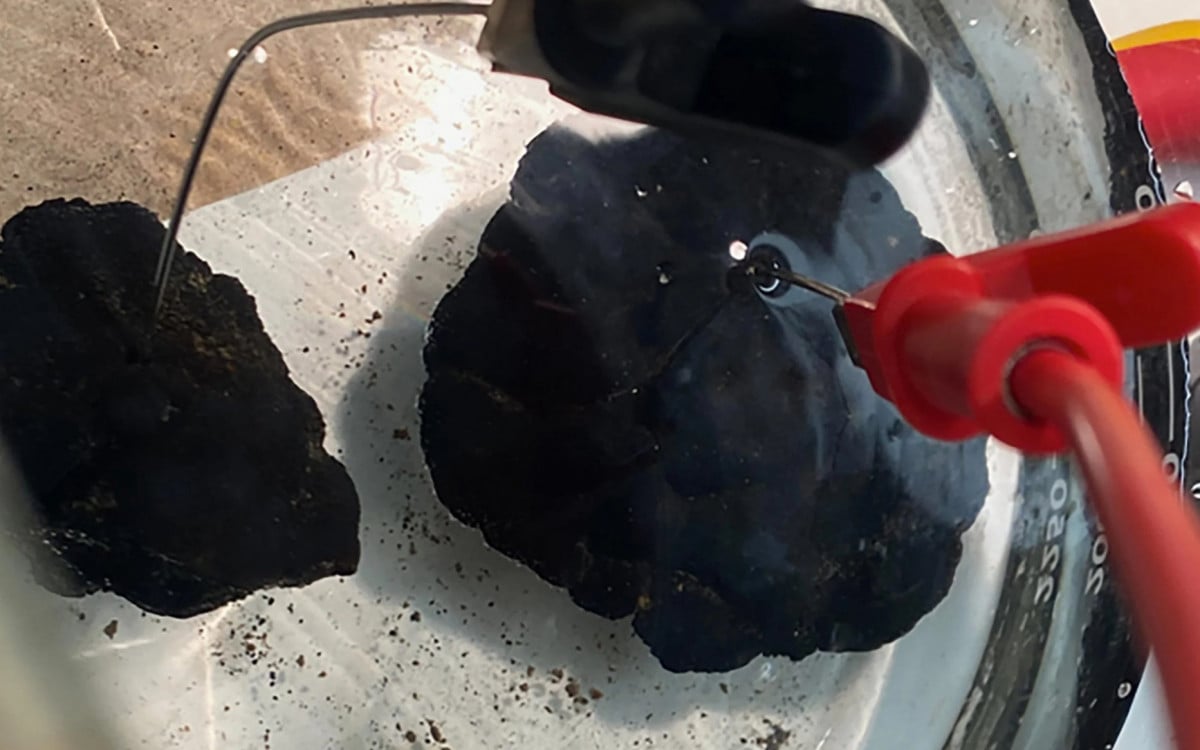Posted on 07/22/2024 at 1:05 PM
This strange “black oxygen” is produced by a process other than photosynthesis, more than 4,000 meters deep, in the abyssal plain of the Clarion-Clipperton Fracture Zone in the central Pacific Ocean, off the west coast of Mexico.
Polymetallic nodules are mineral aggregates rich in metals (manganese, copper, cobalt…) and are highly sought after in industry for the manufacture of batteries, wind turbines or photovoltaic panels.
A vessel from the Scottish Association for Marine Science (SAMS) was taking samples in the area to assess the impact of mineral exploration on an ecosystem that is home to unique animal species that survive without light.
“We were trying to measure oxygen consumption at the bottom of the ocean using benthic chambers,” Andrew Sweatman, lead author of the study published in the journal Nature Geoscience, told AFP.
The process involves installing these chambers in marine sediments and observing how the oxygen concentration in the water inside them decreases as it is absorbed by the respiration of living organisms.
However, something unexpected happened: “Oxygen was increasing in the water above the sediment, in complete darkness and without photosynthesis,” explained Sweatman, leader of the Seafloor Ecology and Biogeochemistry research group at SAMS.
Scientists Surprise
Advertising
The experts repeated the experiment on board the ship to confirm the phenomenon. Once again, they observed increased oxygen in the sediment samples in complete darkness.
“We found an electrical potential on the surface of the nodules that was roughly the same as an AA battery,” Sweetman described, comparing the nodules to “batteries inside rocks.”
These amazing properties may be the result of the process of electrolysis of water, which separates its molecules into hydrogen and oxygen using an electric current.
“The discovery that oxygen is produced by a process other than photosynthesis is leading us to rethink how life on Earth arose,” commented Nicholas Owens, director of SAMS.
The conventional view is that oxygen began to be produced about 3 billion years ago by cyanobacteria, leading to the evolution of more complex organisms.
“Life could have started somewhere other than Earth’s surface and near the ocean floor. Since this process is present on our planet, it could have created oxygenated habitats on other ‘ocean worlds’ such as Enceladus or Europa (moons of Saturn and Jupiter) and thus created conditions suitable for extraterrestrial life,” Sweetman suggested.
It is believed that this study will enable better regulation of deep-water mineral exploration, based on more accurate environmental information.

“Wannabe internet buff. Future teen idol. Hardcore zombie guru. Gamer. Avid creator. Entrepreneur. Bacon ninja.”

